Laravel 9 Socialite Login with Facebook Tutorial
Mar 11, 2022 . Admin
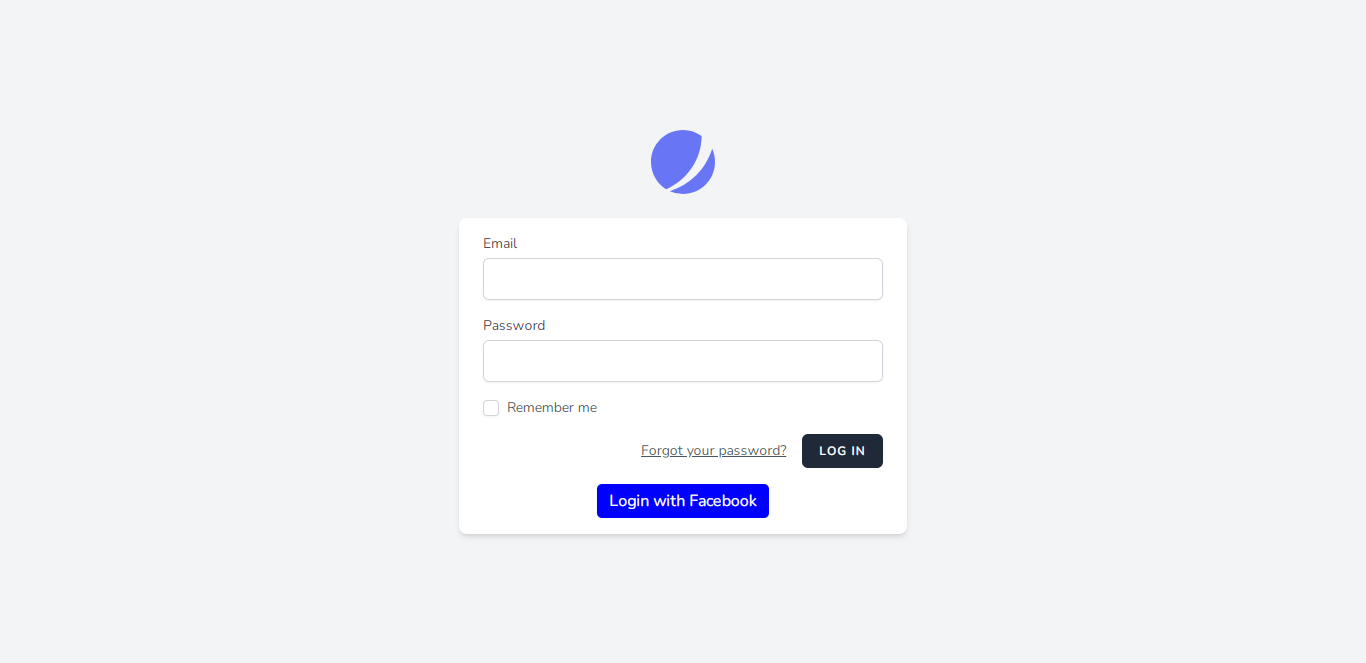
Hi dev,
Today, I am explain Laravel 9 Socialite Login with Facebook Tutorial. we will learn how to login using Facebook social media account in Laravel 9 using the Socialite package. Laravel 9 application using the Laravel Socialite composer package. In this post i am going to explain about Laravel Socialite Authentication using Facebook. This post will give you simple example of laravel 9 login with facebook account. This tutorial will guide you on how to implement facebook login in laravel 9 app using socialite package.
If you want to integrate Facebook login in Laravel 9 application. So for this, first you have to make an application in the Facebook Developer Console. Because when you create an app in the Facebook Developer Console. Then Facebook provides you some secret details. With the help of which you can integrate and implement Facebook login in Laravel 9 app.
Facebook login implementation is very simple in Laravel 9 app using the socialite package.
So you can make an app in the Facebook Developer Console by following the steps given below:
Step 1: Download LaravelLet us begin the tutorial by installing a new laravel application. if you have already created the project, then skip following step.
composer create-project laravel/laravel example-appStep 2: Install JetStream
Now, in this step, we need to use composer command to install jetstream, so let's run bellow command and install bellow library.
composer require laravel/jetstream
now, we need to create authentication using bellow command. you can create basic login, register and email verification. if you want to create team management then you have to pass addition parameter. you can see bellow commands:
php artisan jetstream:install livewire
Now, let's node js package:
npm install
let's run package:
npm run dev
now, we need to run migration command to create database table:
php artisan migrateStep 3: Install Socialite
In first step we will install Socialite Package that provide api to connect with facebook account. So, first open your terminal and run bellow command:
composer require laravel/socialiteStep 4: Create Facebook App
First we need to create Facebook App and get ID and Secret. So, let's follow bellow steps as well:
Step 1: Go to Facebook Developer App to click here: https://developers.facebook.com
Step 2: Then click to "Create App" button as here
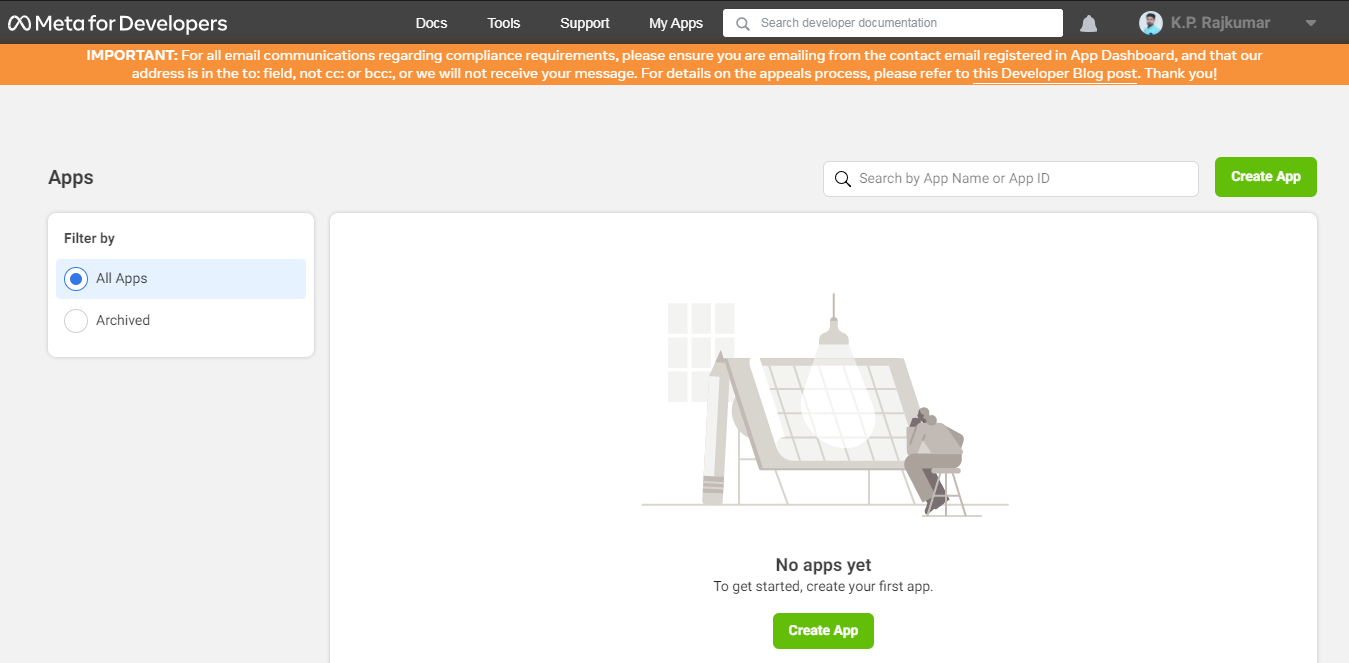
Step 3: Then Choose consumer here:
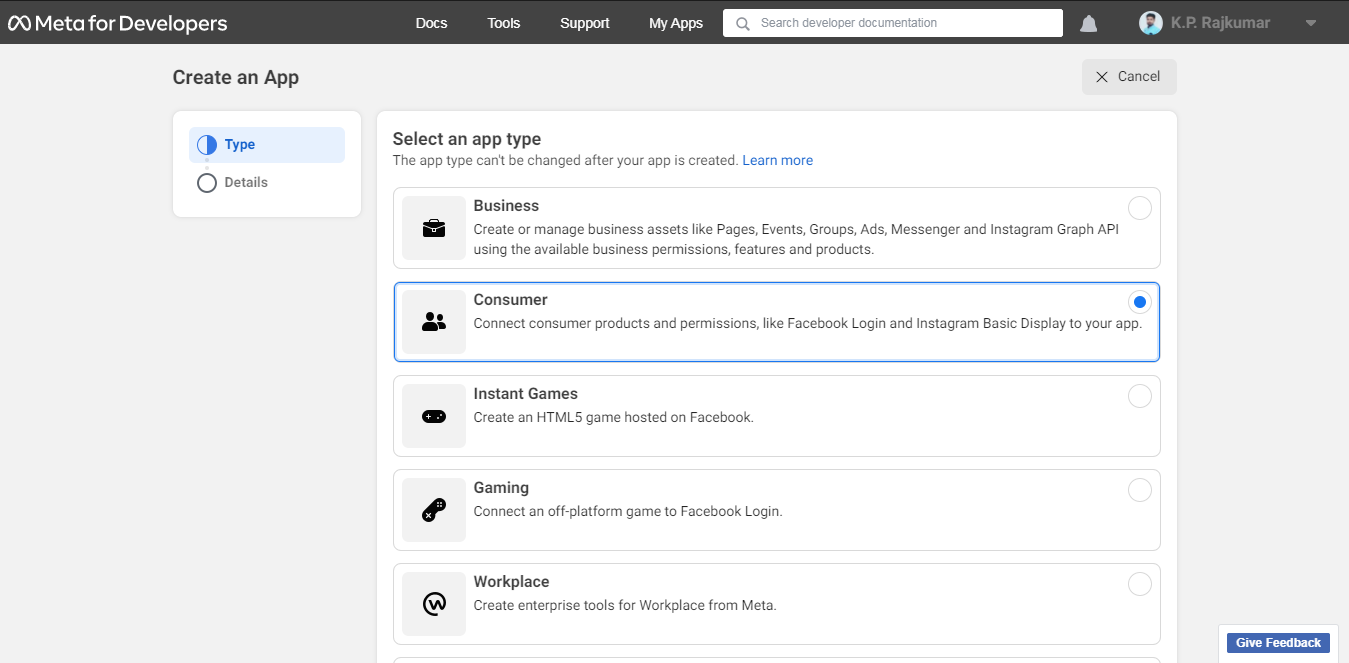
Step 4: Then Add App name as bellow, then after click to create app button:
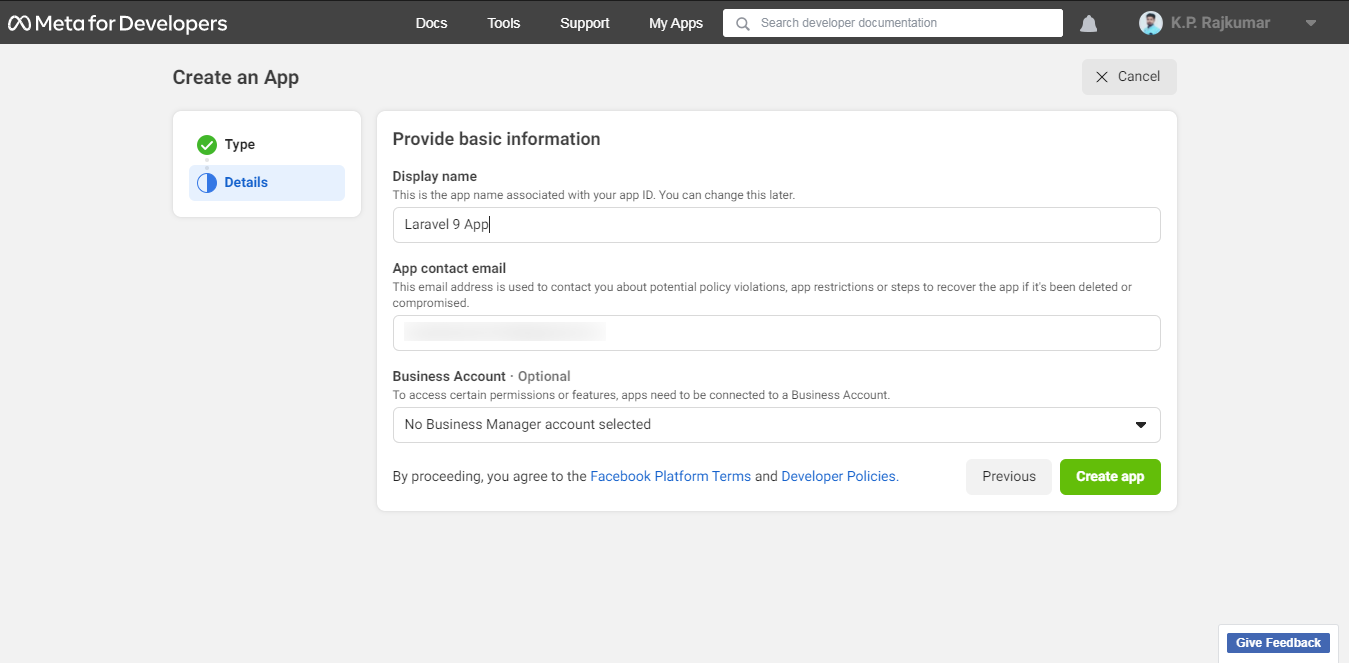
Step 5: Now, you will get app id and secret, Then you need to add this details to .env file:
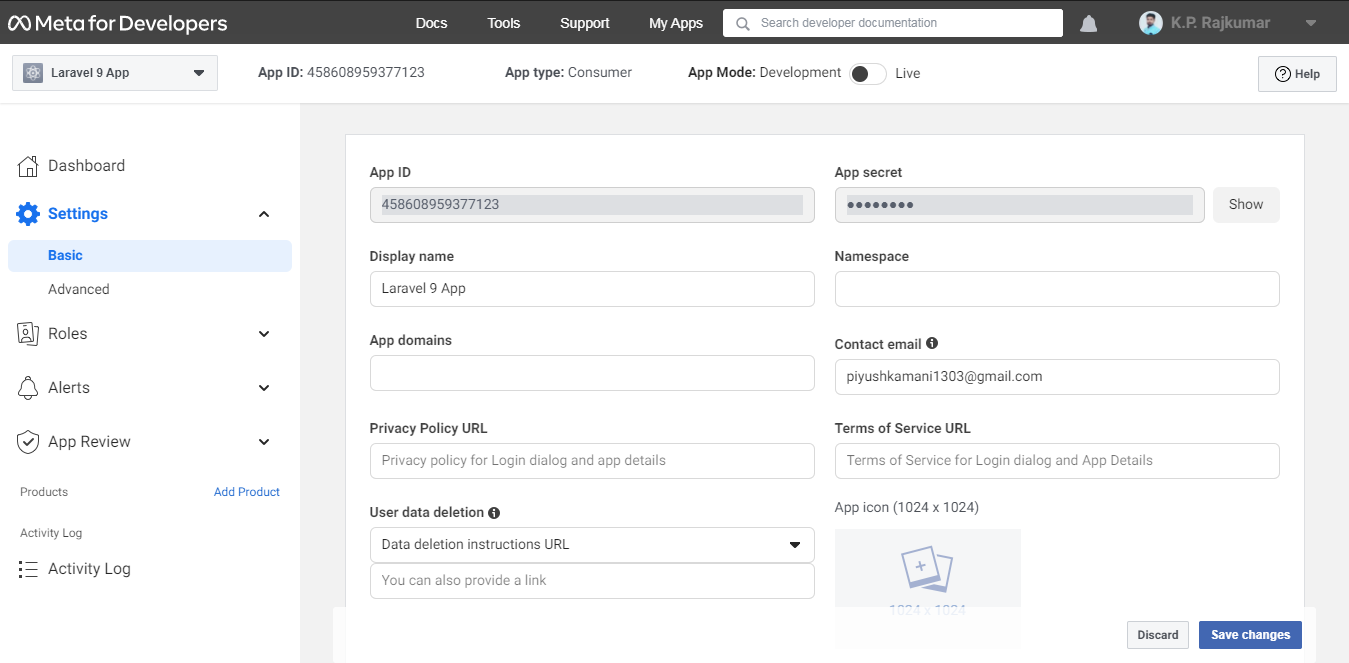
Step 6: If you want to upload on production then you need to specify domain as well. But, you are checking with local then you don't need to add this urls:
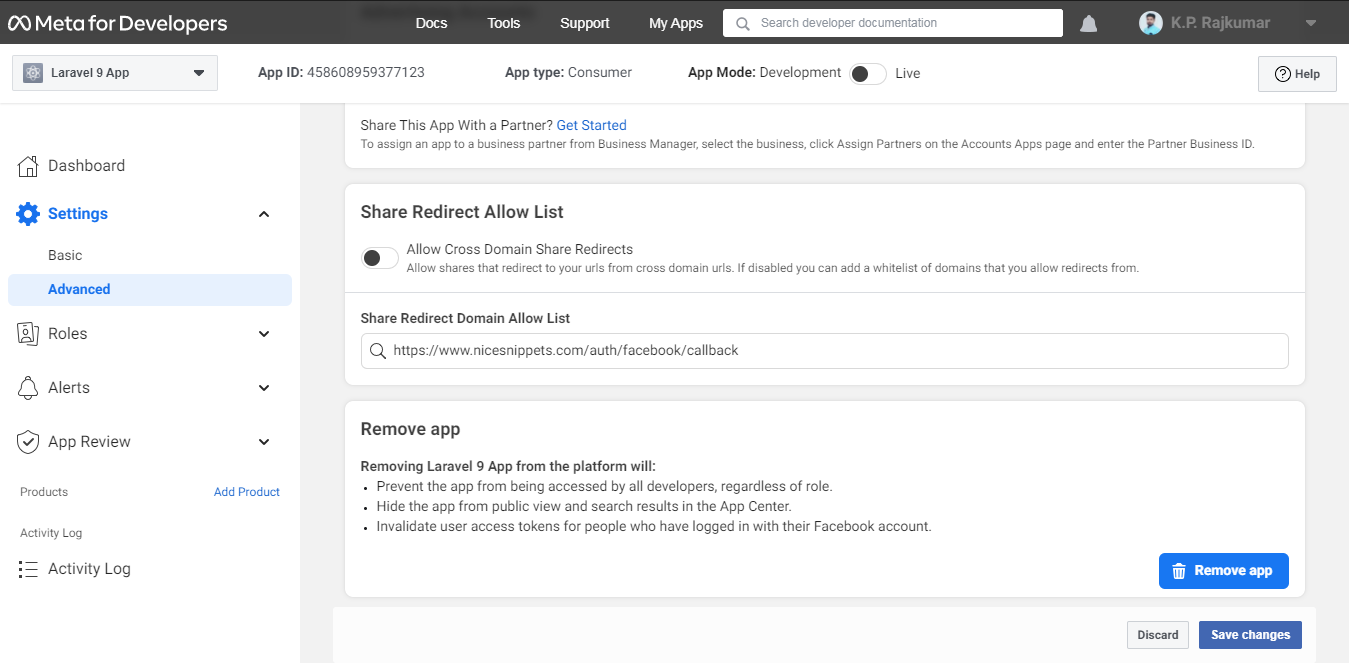
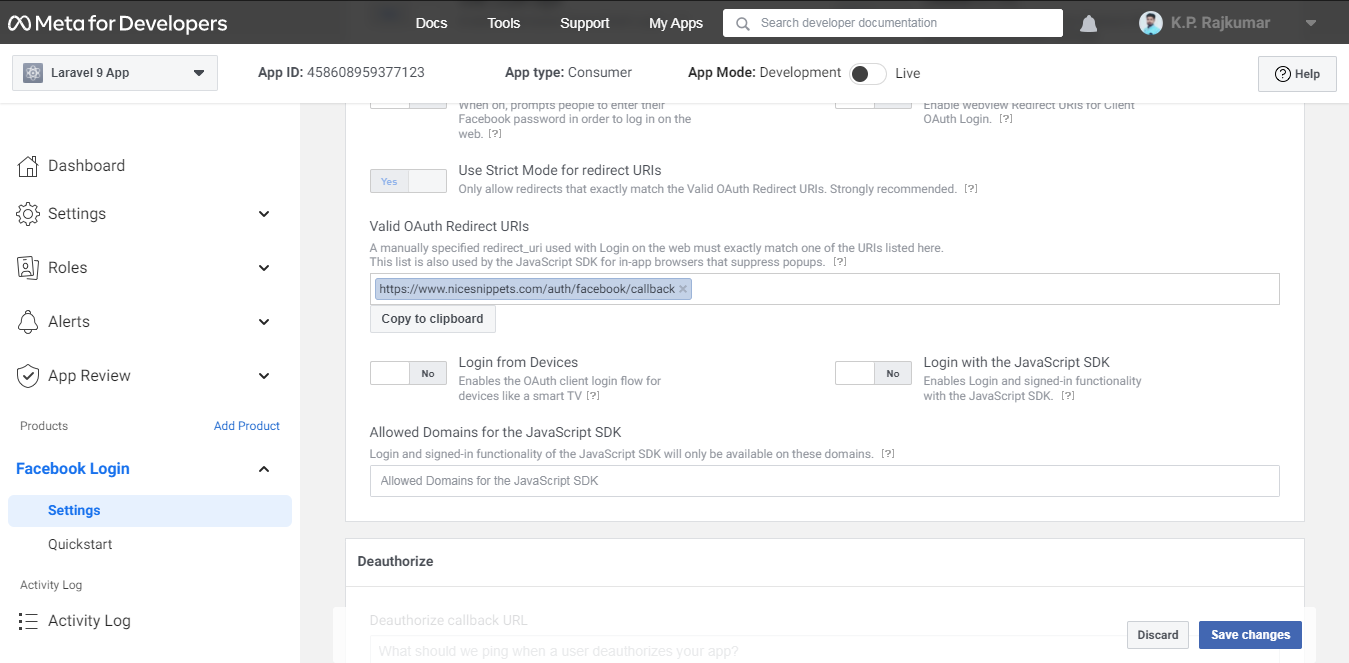
Now you have to set app id, secret and call back url in config file so open config/services.php and set id and secret this way:
config/services.php
return [
....
'facebook' => [
'client_id' => env('FACEBOOK_CLIENT_ID'),
'client_secret' => env('FACEBOOK_CLIENT_SECRET'),
'redirect' => 'http://localhost:8000/auth/facebook/callback',
],
]
Then you need to add google client id and client secret in .env file:
.envFACEBOOK_CLIENT_ID=xyz FACEBOOK_CLIENT_SECRET=123Step 5: Add Database Column
In this step first we have to create migration for add facebook_id in your user table. So let's run bellow command:
php artisan make:migration add_facebook_id_columnMigration
<?php
use Illuminate\Database\Migrations\Migration;
use Illuminate\Database\Schema\Blueprint;
use Illuminate\Support\Facades\Schema;
return new class extends Migration
{
/**
* Run the migrations.
*
* @return void
*/
public function up()
{
Schema::table('users', function ($table) {
$table->string('facebook_id')->nullable();
});
}
/**
* Reverse the migrations.
*
* @return void
*/
public function down()
{
}
};
Update mode like this way:
app/Models/User.php
<?php
namespace App\Models;
use Illuminate\Contracts\Auth\MustVerifyEmail;
use Illuminate\Database\Eloquent\Factories\HasFactory;
use Illuminate\Foundation\Auth\User as Authenticatable;
use Illuminate\Notifications\Notifiable;
use Laravel\Fortify\TwoFactorAuthenticatable;
use Laravel\Jetstream\HasProfilePhoto;
use Laravel\Sanctum\HasApiTokens;
class User extends Authenticatable
{
use HasApiTokens;
use HasFactory;
use HasProfilePhoto;
use Notifiable;
use TwoFactorAuthenticatable;
/**
* The attributes that are mass assignable.
*
* @var string[]
*/
protected $fillable = [
'name',
'email',
'password',
'facebook_id'
];
/**
* The attributes that should be hidden for serialization.
*
* @var array
*/
protected $hidden = [
'password',
'remember_token',
'two_factor_recovery_codes',
'two_factor_secret',
];
/**
* The attributes that should be cast.
*
* @var array
*/
protected $casts = [
'email_verified_at' => 'datetime',
];
/**
* The accessors to append to the model's array form.
*
* @var array
*/
protected $appends = [
'profile_photo_url',
];
}
Step 6: Create Routes
After adding facebook_id column first we have to add new route for facebook login. so let's add bellow route in routes.php file.
routes/web.php
<?php
use Illuminate\Support\Facades\Route;
use App\Http\Controllers\GoogleController;
/*
|--------------------------------------------------------------------------
| Web Routes
|--------------------------------------------------------------------------
|
| Here is where you can register web routes for your application. These
| routes are loaded by the RouteServiceProvider within a group which
| contains the "web" middleware group. Now create something great!
|
*/
Route::get('/', function () {
return view('welcome');
});
Route::middleware(['auth:sanctum', 'verified'])->get('/dashboard', function () {
return view('dashboard');
})->name('dashboard');
Route::controller(FacebookController::class)->group(function(){
Route::get('auth/facebook', 'redirectToFacebook')->name('auth.facebook');
Route::get('auth/facebook/callback', 'handleFacebookCallback');
});
Step 7: Create Controller
After add route, we need to add method of facebook auth that method will handle facebook callback url and etc, first put bellow code on your FacebookController.php file.
<?php
namespace App\Http\Controllers;
use Illuminate\Http\Request;
use Laravel\Socialite\Facades\Socialite;
use Illuminate\Support\Facades\Auth;
use App\Models\User;
use Exception;
class FacebookController extends Controller
{
/**
* Create a new controller instance.
*
* @return void
*/
public function redirectToFacebook()
{
return Socialite::driver('facebook')->redirect();
}
/**
* Create a new controller instance.
*
* @return void
*/
public function handleFacebookCallback()
{
try {
$user = Socialite::driver('facebook')->user();
$finduser = User::where('facebook_id', $user->id)->first();
if($finduser){
Auth::login($finduser);
return redirect()->intended('dashboard');
}else{
$newUser = User::updateOrCreate(['email' => $user->email],[
'name' => $user->name,
'facebook_id'=> $user->id,
'password' => encrypt('123456dummy')
]);
Auth::login($newUser);
return redirect()->intended('dashboard');
}
} catch (Exception $e) {
dd($e->getMessage());
}
}
}
Step 8: Update Blade File
Ok, now at last we need to add blade view so first create new file login.blade.php file and put bellow code:
resources/views/auth/login.blade.php
<x-guest-layout>
<x-jet-authentication-card>
<x-slot name="logo">
<x-jet-authentication-card-logo />
</x-slot>
<x-jet-validation-errors class="mb-4" />
@if (session('status'))
<div class="mb-4 font-medium text-sm text-green-600">
{{ session('status') }}
</div>
@endif
<form method="POST" action="{{ route('login') }}">
@csrf
<div>
<x-jet-label for="email" value="{{ __('Email') }}" />
<x-jet-input id="email" class="block mt-1 w-full" type="email" name="email" :value="old('email')" required autofocus />
</div>
<div class="mt-4">
<x-jet-label for="password" value="{{ __('Password') }}" />
<x-jet-input id="password" class="block mt-1 w-full" type="password" name="password" required autocomplete="current-password" />
</div>
<div class="block mt-4">
<label for="remember_me" class="flex items-center">
<x-jet-checkbox id="remember_me" name="remember" />
<span class="ml-2 text-sm text-gray-600">{{ __('Remember me') }}</span>
</label>
</div>
<div class="flex items-center justify-end mt-4">
@if (Route::has('password.request'))
<a class="underline text-sm text-gray-600 hover:text-gray-900" href="{{ route('password.request') }}">
{{ __('Forgot your password?') }}
</a>
@endif
<x-jet-button class="ml-4">
{{ __('Log in') }}
</x-jet-button>
</div>
<div class="flex items-center justify-center mt-4">
<a class="btn btn-primary" href="{{ url('auth/facebook') }}" style="margin-top: 0px !important;background: blue;color: #ffffff;padding: 5px 12px;border-radius:5px;" id="btn-fblogin">
<i class="fa fa-facebook-square" aria-hidden="true"></i> Login with Facebook
</a>
</div>
</form>
</x-jet-authentication-card>
</x-guest-layout>
Run Laravel App:
All steps have been done, now you have to type the given command and hit enter to run the laravel app:
php artisan serve
Now, you have to open web browser, type the given URL and view the app output:
http://localhost:8000/loginOutput:

I hope it can help you...
